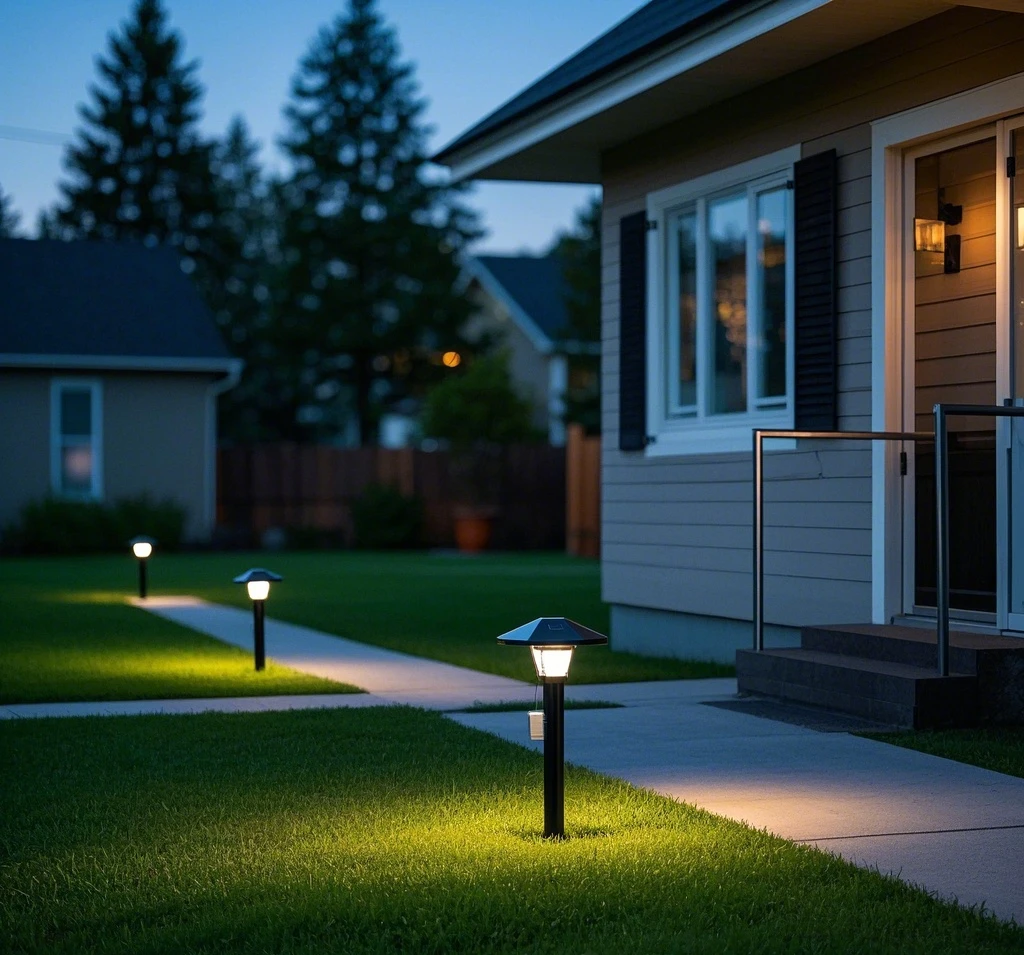Solar path lights have surged in popularity, offering an eco-friendly and cost-effective solution for outdoor illumination. Demand for consistent nighttime performance has spurred the integration of solar power with energy storage, enabling these lights to operate for 12 hours after dusk. This article evaluates the commercial feasibility of this technology, examining advancements in solar components, storage solutions, and market dynamics.

Solar Technology in Path Lights
How Solar Panels Function
Solar path lights rely on photovoltaic (PV) panels to convert sunlight into electricity. These panels, typically made of silicon-based cells, generate direct current (DC) when exposed to light. The electricity charges an onboard battery, which powers the lights at night. Panel efficiency plays a pivotal role. High-efficiency panels produce more energy under the same conditions, allowing for compact designs or increased output.
Recent Technological Advances
Solar panel technology has seen remarkable progress. Monocrystalline and polycrystalline silicon cells now boast higher conversion rates, fitting the space constraints of path lights. Maximum Power Point Tracking (MPPT) systems enhance energy capture, optimizing performance across varying light levels. A 2022 report from the U.S. National Renewable Energy Laboratory (NREL) notes that solar panel efficiency has climbed above 22%, with costs dropping steadily, accelerating adoption in lighting applications.
Energy Storage Solutions
Battery Options
The storage system determines a path light’s runtime and dependability. Key battery types include:
- Nickel-Cadmium (NiCd): Rugged and tolerant of extreme temperatures, yet limited by low energy density and prone to capacity loss from the “memory effect.”
- Nickel-Metal Hydride (NiMH): Offers higher energy density with reduced memory issues, serving as a mid-tier option.
- Lithium-Ion (Li-ion): Delivers top energy density and longevity, though higher costs and the need for sophisticated management systems pose challenges.
Each type balances cost and performance, shaping design choices for path lights.
Integration with Solar Panels
Achieving 12-hour endurance requires precise alignment between storage and solar input. Battery capacity must meet nighttime demands while accounting for system losses. Charge controllers and battery management systems regulate current, preventing overcharging or deep discharge. Optimized charge-discharge cycles ensure full daytime charging and steady nighttime output.
Commercial Feasibility Analysis
Cost Factors
Commercial viability hinges on cost considerations. Key elements include:
- Initial Investment: Solar panels, batteries, fixtures, and installation carry a higher upfront cost than traditional lighting, offset by long-term savings.
- Maintenance Expenses: Minimal wiring and infrequent bulb replacements lower upkeep costs, though batteries require replacement every 3-5 years.
- Energy Savings: Zero electricity bills post-installation drastically cut operating expenses.
The U.S. Department of Energy (DOE) reported in 2022 that solar path lights can reduce lighting costs by up to 80% over a decade, highlighting their economic appeal.
Market Demand
Solar path lights are in rising demand. Growing environmental awareness and cost-saving priorities drive adoption in hospitality, municipal projects, and residential communities. A 12-hour runtime expands their utility to parks, walkways, and parking lots. The Solar Energy Industries Association (SEIA) found in a 2023 survey that 65% of commercial buyers prioritize endurance when selecting solar lighting, signaling strong market support for long-lasting solutions.
Return on Investment
Return on investment (ROI) weighs total ownership costs against savings. DOE estimates suggest solar path lights yield a 20-30% ROI over their lifespan, varying by location and use. An NREL case study of a California resort deploying 12-hour endurance path lights reported a 25% ROI within five years, with energy costs dropping 70%. These figures affirm the technology’s robust financial potential.
Conclusion
Solar path lights with 12-hour nighttime endurance represent a leap forward in outdoor lighting. Combining efficient solar panels with dependable storage eliminates grid reliance. Commercially, low operating costs, strong market demand, and high ROI underpin its viability. Ongoing technological improvements and declining costs will further its reach. Solar path lights with extended runtime stand poised to dominate sustainable illumination, offering a compelling case for widespread adoption.


Leave a Reply